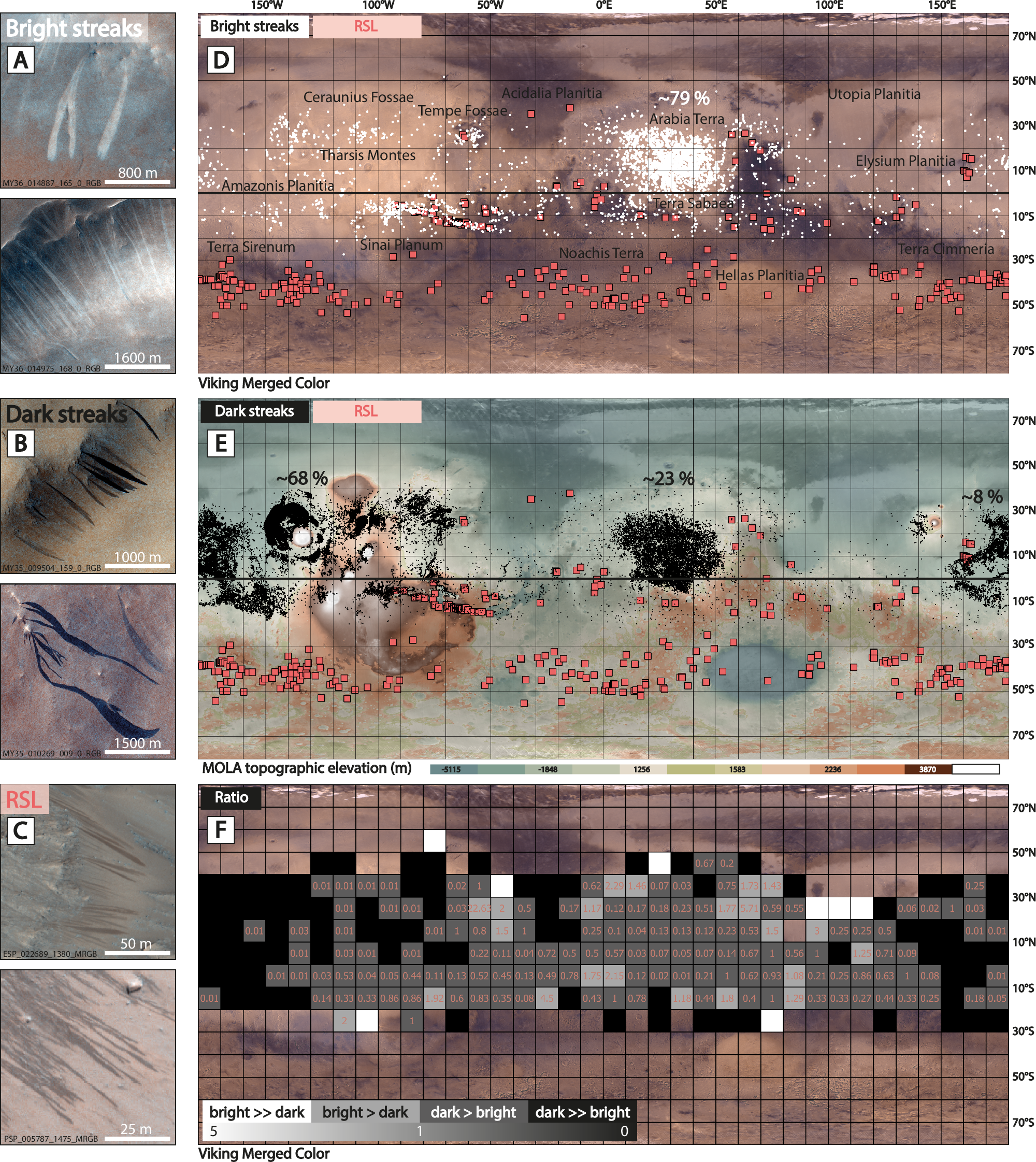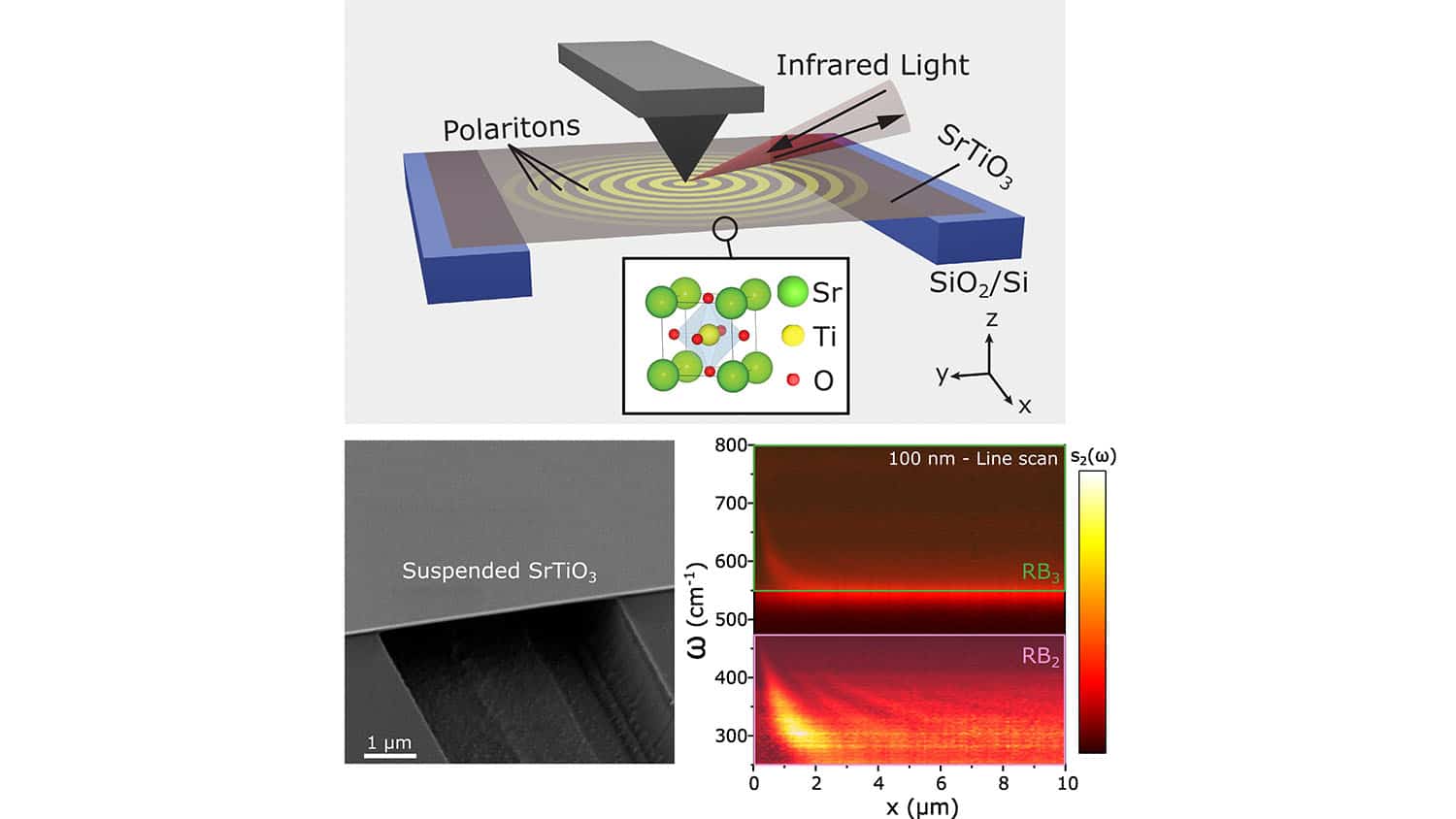2025-05-19 ブラウン大学
<関連情報>
火星の斜面の縞模様は乾燥している Streaks on martian slopes are dry
Valentin Tertius Bickel & Adomas Valantinas
Nature Communications Published:19 May 2025
DOI:https://doi.org/10.1038/s41467-025-59395-w

Abstract
Slope streaks are dark albedo features on martian slopes that form spontaneously and fade over years to decades. Along with seasonally recurring slope lineae, streak formation has been attributed to aqueous processes, implying the presence of transient yet substantial amounts of liquid water or brines on Mars’ surface, with important implications for present-day Mars’ habitability. Here, we use a deep learning-enabled approach to create the first consistent, global catalog of half a million individual slope streaks. We show that slope streaks modify less than 0.1% of the martian surface, but transport several global storm equivalents of dust per Mars year, potentially playing a major role in the martian dust cycle. Our global geostatistical analysis challenges wet streak formation models and instead supports dry streak formation, driven by seasonal dust delivery and energetic triggers like wind and meteoritic impacts. We further identify a qualitative, spatiotemporal relation between recurring slope lineae formation, seasonal dust deposition, and dust devil activity. Our findings suggest that modern Mars’ slopes do not commonly experience transient flows of water or brines, implying that streak bearing terrain can be explored without raising planetary protection concerns.



